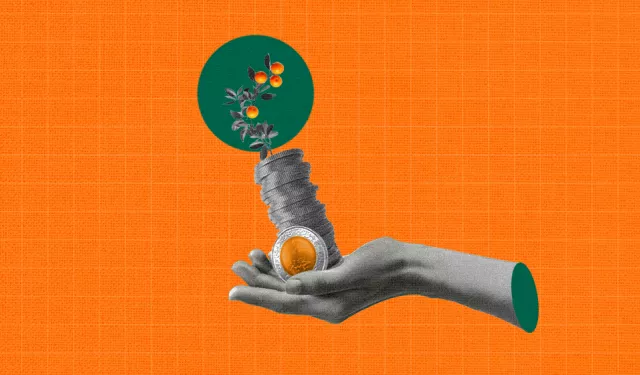
The High Cost of Low Prices| What do we exchange when we trade?
Trade between major capitalist centers and peripheral economies is routinely characterized as unequal exchange. The asymmetry facing middle‑income countries such as Egypt vis‑à‑vis global markets extends well beyond the systematic underpricing of their outputs. It encompasses the externalization of environmental harms and the dissipation of scarce resources that producer countries absorb in order to supply goods demanded abroad.
Egypt’s agricultural exports illustrate this dynamic. As I noted earlier, annual gains in selected export lines, oranges for instance, are celebrated even when unit prices are exceedingly low and production is resource‑intensive, especially in terms of our limited freshwater supply.
Karl Marx’s notion of “commodity fetishism” clarifies our enthusiasm for agricultural exports. Capitalism induces us to see goods primarily through their monetary value, thereby occluding the fact that commodities embody human labor and social relations. This optic deflects attention from distributional outcomes and from the ecological costs embedded in production.
In effect, the orange becomes a “floating” commodity, valued for the hard currency it attracts, while its full production costs and the opportunity cost of the vast resources it commands are bracketed out.
The value gap between North and South
In international trade, countries typically specialize in producing certain types of goods for export, within what economists call the international division of labor. High‑income economies tend to export machinery, high‑technology goods and intangible services, reflecting deep stocks of knowledge, skills, economies of scale and sector‑specific infrastructure. As tariff barriers have receded, competing with such incumbents has become markedly more difficult.
By contrast, low‑ and middle‑income economies specialize in the production of resource‑ and labor‑intensive, pollution‑heavy goods like cement, phosphate fertilizers and agricultural products. They leverage low wages, surplus labor, cheap energy, and permissive environmental regulations that together confer a comparative advantage.
This international division of labor imposes material losses on lower‑income exporters. The multi‑regional input–output database, EXIOBASE, shows that, per one million euros of exports, middle‑ and low‑income countries bear 27 times the harmful environmental impact associated with the exports of high‑income countries.
Concurrently, these exporters expend 13.5 times more labor. Each million euros of exports from lower‑income countries requires roughly 100,000 hours of work, compared with 7,500 hours for an equivalent export value from higher‑income countries.
Such metrics are largely invisible in mainstream economic data. Conventional statistics privilege value added—the difference between the cost of intermediate inputs and the final price—while abstracting away the environmental burden and labor time incurred. Because middle‑ and low‑income countries contribute primarily low‑priced final goods, their measured contribution to global output appears modest.
What price for our exports?
Why are final export prices from middle‑ and low‑income countries depressed? Exchange‑rate dynamics, rooted in monetary policy, are a central driver.
When the US dollar appreciates faster than nominal wage growth in Egypt, the dollar‑denominated price of our exports falls. We must then marshal more labor time to generate the same value added achieved prior to devaluation.
Currency depreciation recurs across middle‑ and low‑income economies. Institutions such as the IMF urge these countries to devalue their currencies to address balance‑of‑payments pressures, positing that a cheaper currency—hence cheaper goods and labor—stimulates exports; this is the logic of “competitive devaluation.”
Yet price declines can exceed volume gains, accelerating the outflow of natural resources and labor with little relief for trade deficits.
The depressive effect of a weaker exchange rate on our export values becomes stark when viewed through purchasing power parity (PPP) rather than the market rate. According to the IMF, the PPP exchange rate from Egyptian pounds to US dollars is about 7.31 pounds per dollar. That is, what one dollar purchases in the United States can be obtained for 7.31 pounds in Egypt. In other words, one dollar commands roughly seven times more real purchasing power in Egypt than in the United States—and the gap is far greater when compared to the official market exchange rate.
International economist Gernot Köhler terms the difference between the PPP and market exchange rates the “distortion factor” (mainstream economics calls it the “conversion factor”). This distortion factor puts pressure on domestic wages and commodity prices: the dollar confers greater purchasing power in Egypt than at its point of origin, enabling consumers in high‑income countries to appropriate disproportionate gains from this disparity.
On Köhler’s reading, systematic undervaluation translates into trillions of dollars in foregone revenues for low‑ and middle‑income countries.
Demand elasticity and price control
On the other hand, lower‑income exporters possess a latent lever to raise export earnings while conserving environmental resources. Returns on many of the primary commodities they supply rise as quantities fall because demand is price‑inelastic.
The primary commodities in which these countries specialize exhibit low price elasticity of demand; consumption needs are strong enough that climate‑induced supply shortfalls can increase exporter revenues.
Counterintuitively, a smaller harvest raises prices by more than the proportional decline in output. Food‑exporting regions can therefore realize revenue gains despite reduced production and shipments.
This logic implies a feasible strategy: planned reductions in production and exports can increase revenues while conserving resources. For cocoa, the long‑term price elasticity of demand is about −0.34. A 30% cut in export supply would raise the long‑run price by roughly 88 percent.
A similar calculus holds for copper. With a long‑term price elasticity not less than −0.4, a 30% output reduction implies a price increase on the order of 75%. Such gains elevate unit export prices and improve measured labor and resource productivity—even with unchanged, or lower, actual output.
Commodity alliances as a strategic option
Given these properties, why do lower‑income exporters continue to sell cheaply, exhausting their natural resources while barely covering external deficits?
The culprit is the competitive structure of these markets. Exporters engage in practices such as dumping—flooding global markets and pushing prices below fair levels—often reinforced by serial devaluations against the currencies of major economies.
Paradoxically, the exports of higher‑income economies are less essential yet command high prices, sustained by quasi‑monopolistic conduct and the market power of transnational corporations that orchestrate global value chains.
For countries habituated to “export dumping,” unilateral restraint fails. If one low‑income exporter curtails shipments, another quickly captures the vacated market share, nullifying the intended price and resource‑conservation effects.
The remedy is collective action. Middle‑ and low‑income countries seeking to leverage low price elasticity must form commodity alliances to coordinate the volumes released to world markets.
Supply management through export and production cuts is hardly novel—and has frequently originated in high‑income settings. In the early twentieth century, private consortia such as the American Copper Export Association (founded in 1918) and several aluminum cartels implemented supply‑reduction schemes to support prices.
After the 1929 crash, the Roosevelt administration enacted the Agricultural Adjustment Act of 1933 to contract output in multiple farm commodities and stabilize collapsing prices. Internationally, numerous arrangements over the last century sought to influence prices in tea, rubber, sugar, coffee and copper via export restraints and production quotas.
OPEC is the canonical case. Founded in 1960, the organization has exercised direct influence over oil prices by calibrating production, thereby enhancing members’ bargaining power. Because oil exhibits low price elasticity of demand, price increases do not elicit commensurate demand contraction, yielding substantial gains for members over decades.
The justifications of mainstream economics
As Thomas Piketty argues in “Capital and Ideology,” regimes of inequality are underwritten by legitimating ideas.
Unequal exchange is frequently rationalized by asserting that high‑income countries are more “productive.”
But the appearance of superior productivity is largely an artifact of measurement. Mainstream economics defines labor and resource productivity monetarily: value added divided by hours worked or resources used.
Applied to lower‑income exporters, a low unit price is divided by large labor hours and resource use, mechanically producing “low productivity.” This monetary definition helps naturalize global disparities by attributing the poverty of low‑income countries to their supposed “low productivity,” despite substantial physical output, long working hours and intensive resource extraction.
The result is circular reasoning: high prices yield high measured productivity by definition, rather than serving as an explanation of productivity. Consequently, conventional development strategies, like “raising productivity”, promoted by institutions such as the IMF, often expand output, depress prices and, paradoxically, reduce measured productivity.
If, instead, low‑ and middle‑income countries raise unit values by restraining supply—the strategy advanced here—their productivity metrics improve even as physical output declines.
In sum, correcting the undervaluation of vital resources—and of labor and resource productivity and value added—requires re‑founding the global pricing regime. That, in turn, demands that middle‑ and low‑income countries proactively negotiate higher prices for their exports by leveraging the low price elasticity of demand characteristic of many primary commodities.
Strategic, collective supply reductions can produce large price increases without equivalent demand loss, thereby raising the economic value of the same human labor and extracted resources, and boosting measured productivity and value added even with less physical output.
Nor would this necessarily induce sharp increases in final consumer prices. Although indispensable, raw materials typically constitute a relatively small share of the retail price of manufactured goods. The larger share of final value is absorbed by services such as marketing, branding, logistics, retailing and finance.
Accordingly, when low‑ and middle‑income exporters leverage inelastic demand to secure fairer prices, the resulting increases are unlikely to translate into substantial retail price inflation—certainly not when compared with the significant price shocks from currency devaluation, which deliver no positive social return.
The more plausible outcome is a more balanced distribution along value chains without overburdening end consumers.
Consider cocoa: estimates suggest that 40% of sector revenues accrue to large retailers and chocolate manufacturers; traders and intermediaries capture about 10%; while producers receive only 5–6% of a market exceeding $130 billion annually. Practically, doubling the farm‑gate price of cocoa beans would raise the cost of the final chocolate product by roughly 5%—an increase that manufacturers can absorb without raising shelf prices.
In forthcoming pieces, I will examine, in greater granularity, the resource intensity and local environmental externalities of Egypt’s export profile across industry, agriculture and services, and relate these to current and potential returns conditional on demand elasticities in those sectors.
